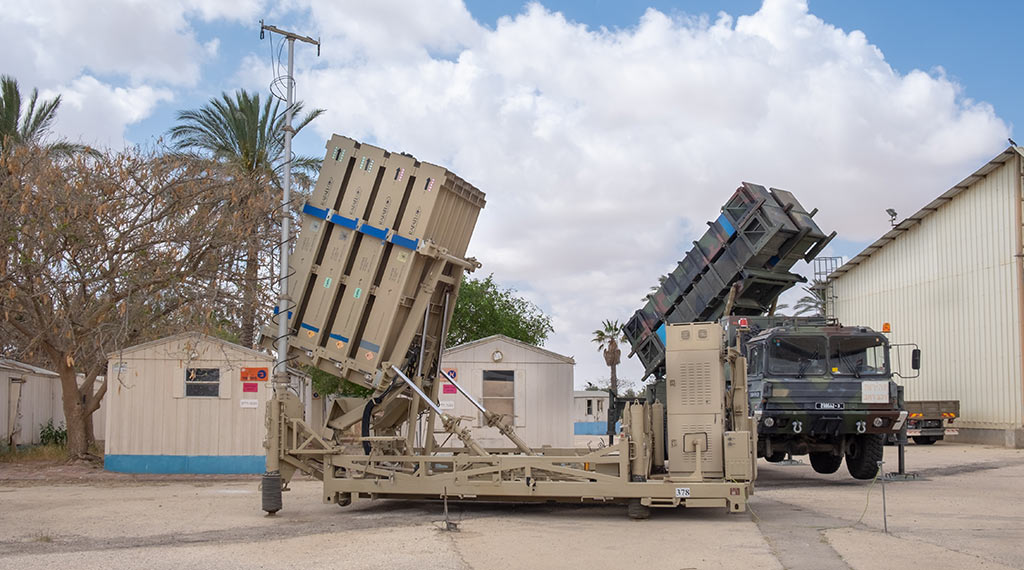
The Iron Dome’s successful track record in thwarting incoming projectiles is noteworthy. However, it is only one aspect of Israel’s multi-tiered aerial defense strategy, which also includes the future Iron Beam, David’s Sling and the Arrow Interceptor. Combined, these formidable weapons are paramount for Israel’s security, and for stability in the Middle East as a whole.
Israel’s Iron Dome air-defense system over the last week intercepted more than two dozen rockets launched from Lebanon. According to Israel Defense Forces (IDF), at least nine other rockets either impacted Israeli territory or have yet to be discovered. Dramatic footage circulated widely on media outlets show a barrage of rockets flying overhead before streaks of light indicate the Iron Dome’s interceptions.
Israel’s Foreign Ministry also tweeted footage of the rockets. Although the IDF is “actively looking to de-escalate the situation in order to ensure freedom of worship and safety for civilians of all faiths,” according to a spokesperson, rocket barrages are nothing new for the Jewish state.
Israel is surrounded by hostile enemies that carry out fairly frequent missile and rocket assaults against it. With a success rate of around 90%, the Iron Dome has remained arguably the most critical component of Israel’s defenses against such attacks. The Iron Dome’s ability to identify and destroy projectiles before they can hit Israeli cities has been paramount.
The History of the Iron Dome
Following the 2007 Second Lebanon War, Israel’s Ministry of Defense knew that a sophisticated air-defense system was needed to protect the country’s civilians and infrastructure. Initially, the IDF proposed a homegrown, short-range antimissile system, but U.S. defense officials warned it would not be effective. Iran-backed Hezbollah militants launched roughly 4,000 rockets targeting Israel in the Second Lebanon War. Many of these short-range Katyusha rockets landed in the country’s northern region. Haifa, Israel’s third-most populous city at the time, was directly impacted by the barrages. Overall, 44 civilians died as a result of the assaults, in addition to thousands more injured.
While the Hezbollah-launched attacks prompted the IDF to prioritize an air-defense system, the Jewish state also suffered from similar attacks in the south. In the early 2000s, more than 8,000 projectiles were launched toward Israel from the Gaza region. By 2007, Israel’s defense minister selected the Iron Dome to lead the country’s defense against the short-range rocket problem that continued to debilitate the country. The Iron Dome was first deployed in 2011, and in that same year it intercepted a Gaza-launched rocket for the very first time.
Specs and Capabilities
Israeli defense manufacturer Rafael Advanced Defense Systems collaborated with Israel Aerospace Industries to design the Iron Dome, which aimed to be able to intercept and destroy short-range projectiles from a range 2.5 to 90 miles away. Over time, the Dome’s capabilities expanded to also take down unmanned aerial vehicles, cruise missiles, and mortar shells. The air-defense system’s high-resolution EL/M-2084 Active Electronically Scanned Array radar is responsible for detecting incoming projectiles. Interceptors are then launched toward the approaching threat.
Iron Dome Is Here to Stay
Perhaps the Iron Dome’s greatest disadvantage is its high cost. According to Forbes, “Each launcher carries 20 Tamir missiles that weigh around 200 pounds each and have a range of over 40 kilometers. They are estimated to cost between $20,000 to $100,000 each.” This expense is problematic, considering Hamas fired more than 4,000 projectiles toward Israel during the 2021 flare-up. Enemy militants have also taken advantage of another Dome weakness, its unknown saturation point. While the system can ward off many projectiles simultaneously, there is a limit. Once the Dome reaches its saturation point, any additional rockets fired will not be intercepted.
The Iron Dome’s successful track record in thwarting incoming projectiles is noteworthy. However, it is only one aspect of Israel’s multi-tiered aerial defense strategy, which also includes the future Iron Beam, David’s Sling and the Arrow Interceptor. Combined, these formidable weapons are paramount for Israel’s security, and for stability in the Middle East as a whole.
- US Stands Up New Drone Strike Force in the Middle East - December 9, 2025
- Has Russia Finally Sold its Su-35s to Iran? - December 2, 2025
- Iran’s Growing Missile Arsenal Is a Challenge for Israel - November 18, 2025
